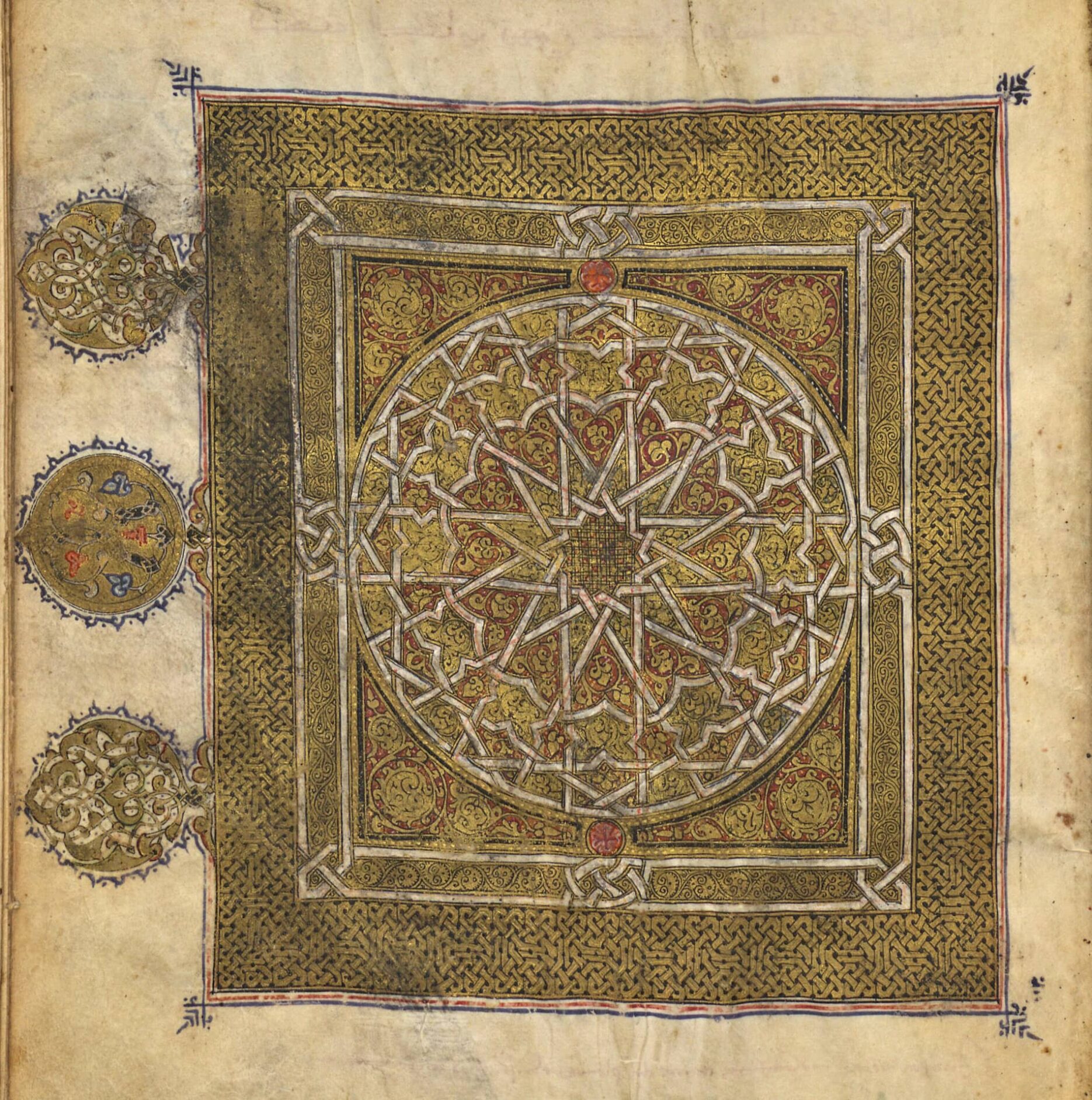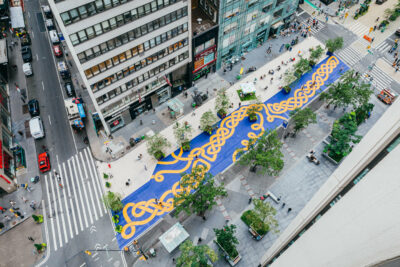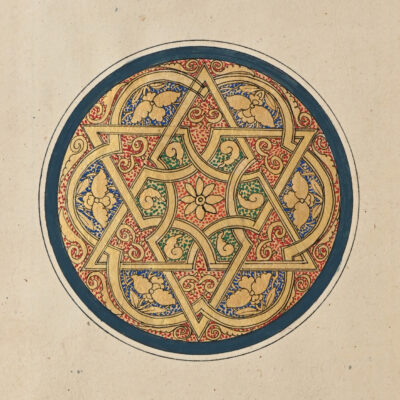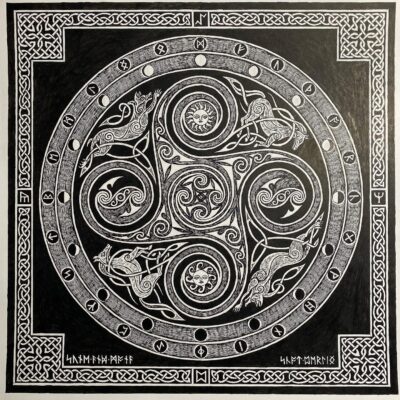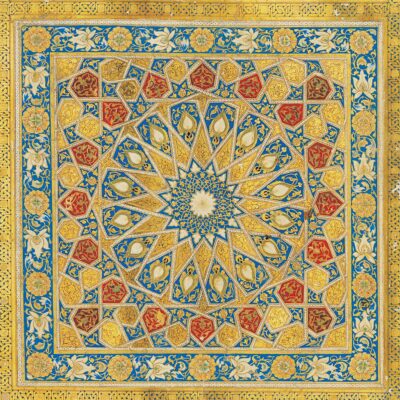Those Koranic illuminations are from a Qurʾān (Koran) that was made in Seville and completed in year 1226. At the time, Seville was the capital city of Al-Andalus, the part of the Iberian Peninsula that was under Muslim rule.
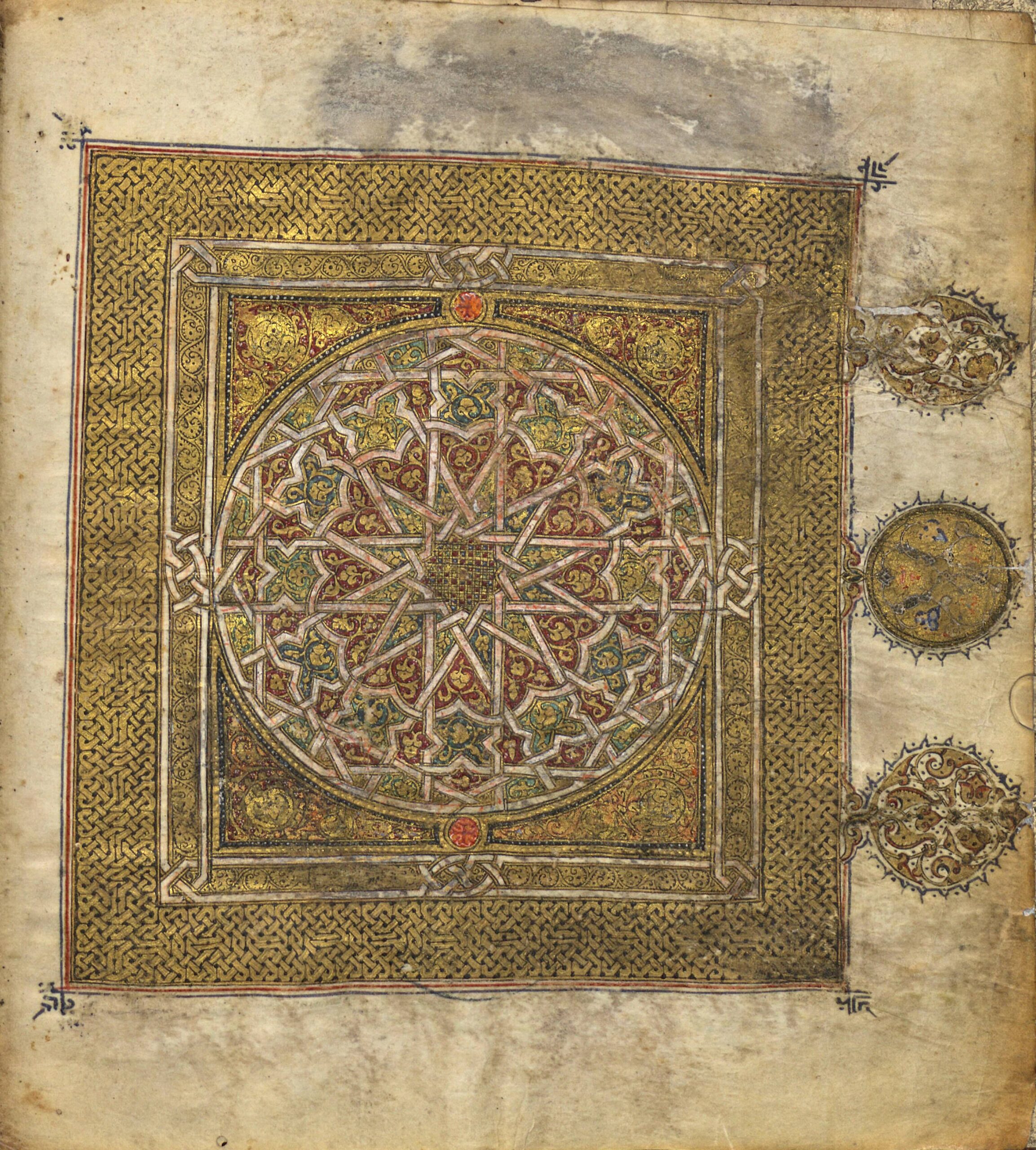
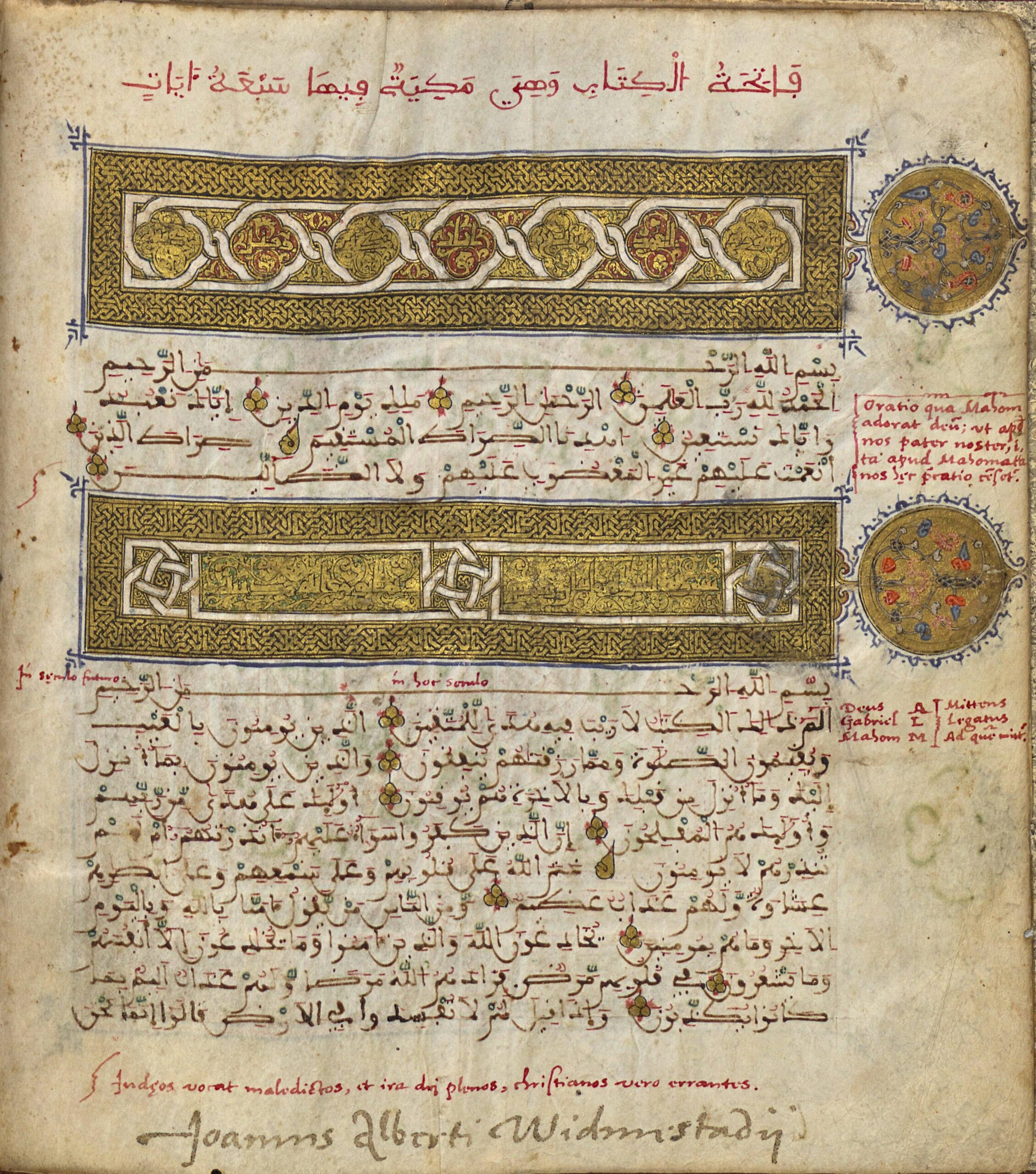
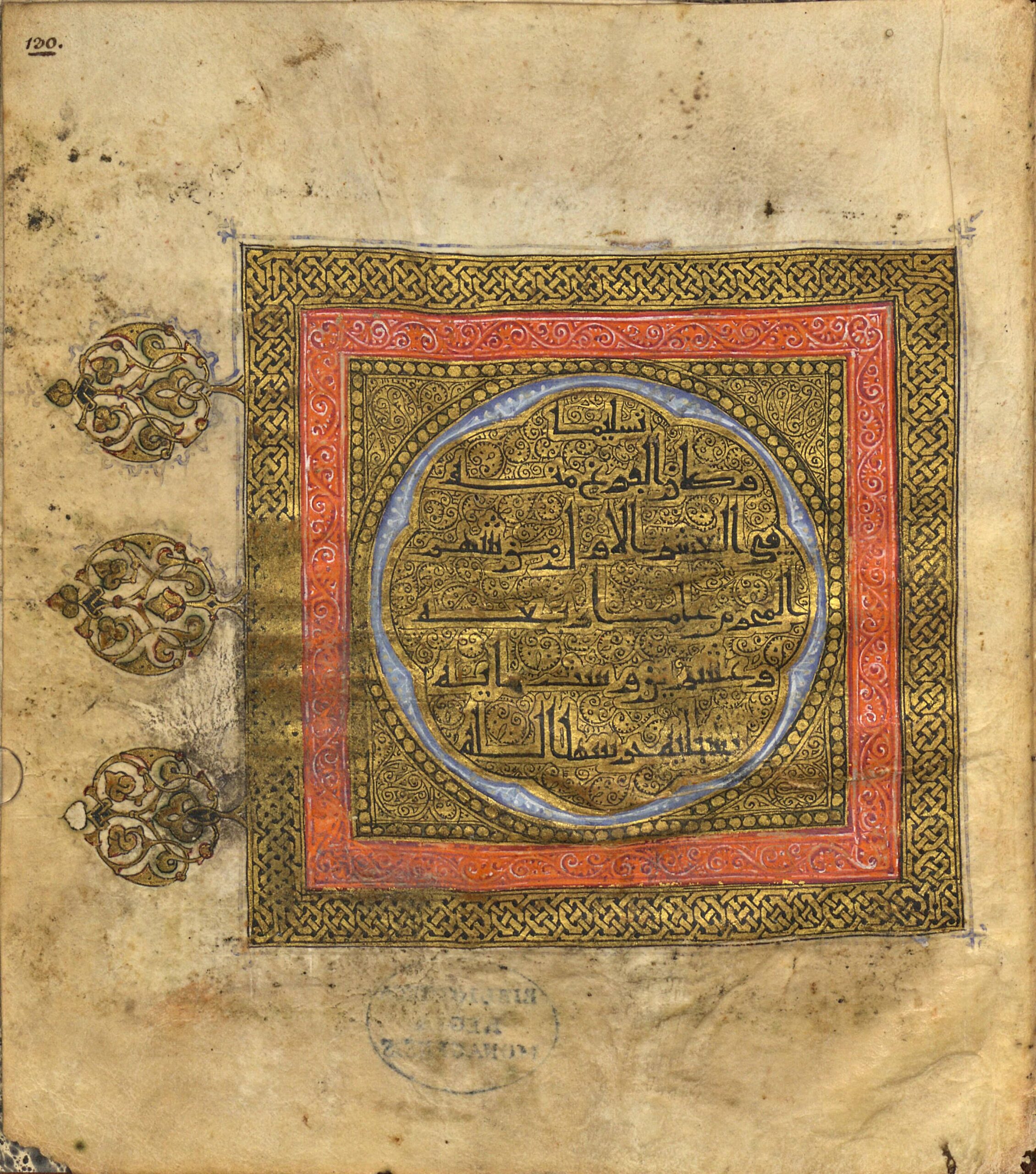
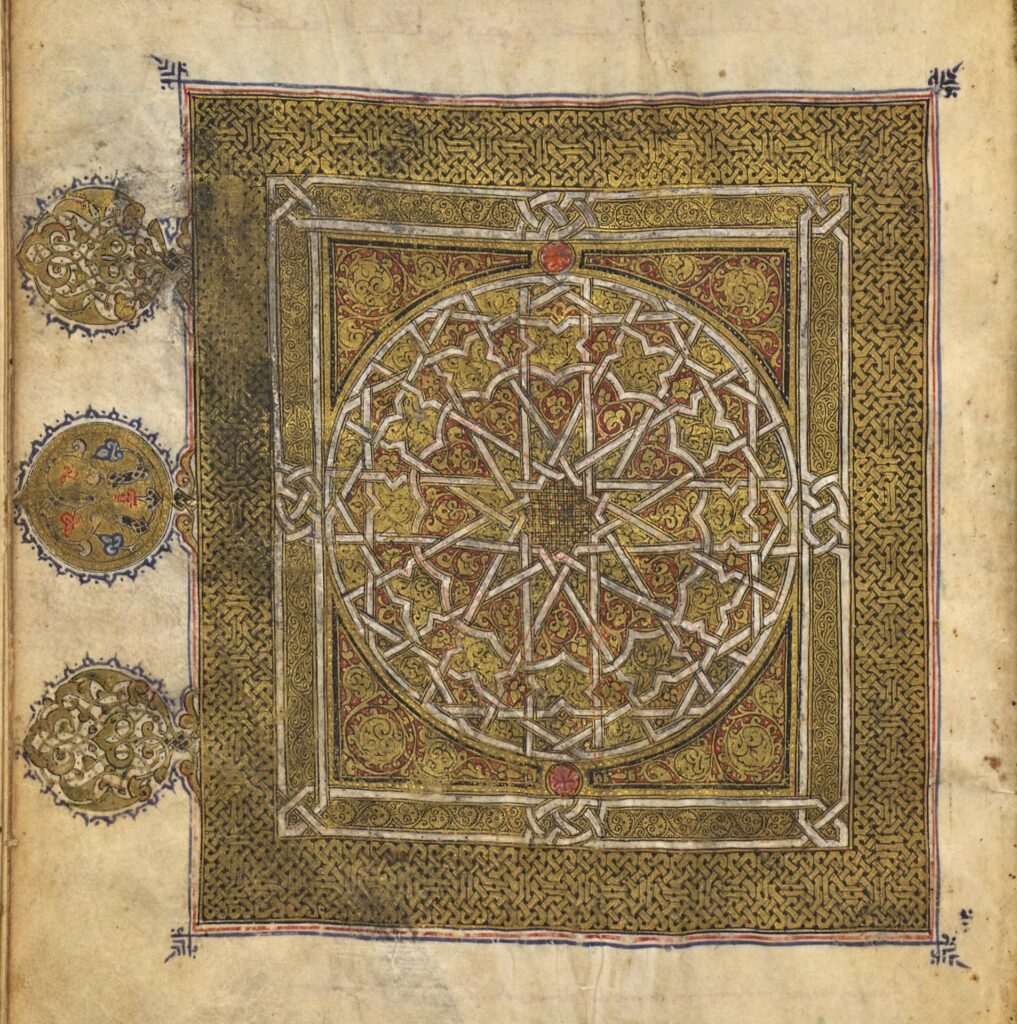
The manuscript is at the Bavarian State Library in Munich (Munchen Bayerische Staatsbibliothek), Germany, under the shelfmark BSS Cod.arab. 1.
It is part of a collection of 3100 volumes of arabic Codices of the library, in the Oriental Manuscripts collection (5300 manuscripts in total).
It is described as follows by the library:
This early 13th-century manuscript is among the very few surviving dated Qurʼans from Islamic Spain. Completed in Seville in 1226 AD (624 AH), it was rescued from destruction during the Reconquista (reconquest) by Muslim refugees who fled Spain for North Africa. In 1535, when the Holy Roman Emperor Charles V (1500–58) conquered Tunis in an expedition against the Barbary pirates, his troops seized the Qurʼan and took it back to Europe. The manuscript subsequently came into possession of Johann Albrecht Widmanstetter (1506–57), a diplomat and orientalist whose library later became the foundation for the Munich court library.
The text is written on parchment in condensed Andalusi script. Gold dominates in the coloring of the opening double page, in the surah (chapter) headings, and in the verse markers and ornaments in the margins referring to prostrations and the division of the Qurʼan into sections. The final page with the colophon is set in a rosette surrounded by a square frame. The manuscript is at the Bavarian State Library in Munich, Germany. // Bayerische Staatsbibliothek, Oriental and Asia Department, 2019
Qurʾān – BSB Cod.arab. 1, Munich


